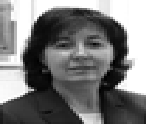
Isabel Montero
Instituto de Ciencia de Materiales de Madrid - ICMM - CSIC, Spain
Title: Secondary electron emission from carbon nanoparticles by electron impact
Biography
Biography: Isabel Montero
Abstract
The secondary electron emission yield (SEY) from materials used in vacuum in high-power RF devices in space missions is the feedback mechanism of the resonant discharge of electrons or multipactor discharge. The maximum work power of those RF systems is unavoidably limited by this effect. Here, we report low-secondary electron emission yield from mixtures of powdered graphite, graphene and carbon nanowires. The samples were tested for SEY, scanning probe microscopies and X-ray photoemission spectroscopy analysis. Insertion and reflection losses measurements of carbon nanoparticles coated RF filters are also critical measurements to analyze the influence of the anti-multipactor coating on the performance quality. Thus, while skin depth at 12 GHz for a typically used material in space borne devices like silver is around 600 nm, coatings of les than 10 nm thickness have demonstrated an improved system overall performance. This is because despite the superior coating materials’ resistivity compared to silver, with its inherent worsening on RF losses, the extremely thinness of the covering layer make that worsening almost negligible, meanwhile SEY properties clearly move on the right direction (Fig.1). The SEY experiments were performed in an UHV chamber also equipped with XPS for surface analysis. The SEY was measured over the primary electron energy range of 0 to 1000 eV. The shape of the SEY curve as a function of primary energy seems to be the inverted image of the typical universal SEY curve. The effect of point sources exhibiting low threshold electron emission due to local field enhancement at the oxidized tip emitters was reduced because the roughening the surface leads to lower secondary electron yields. It was achieved that the emitted secondary electrons are reduced to 70%.

